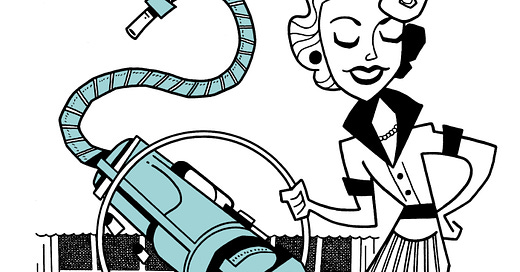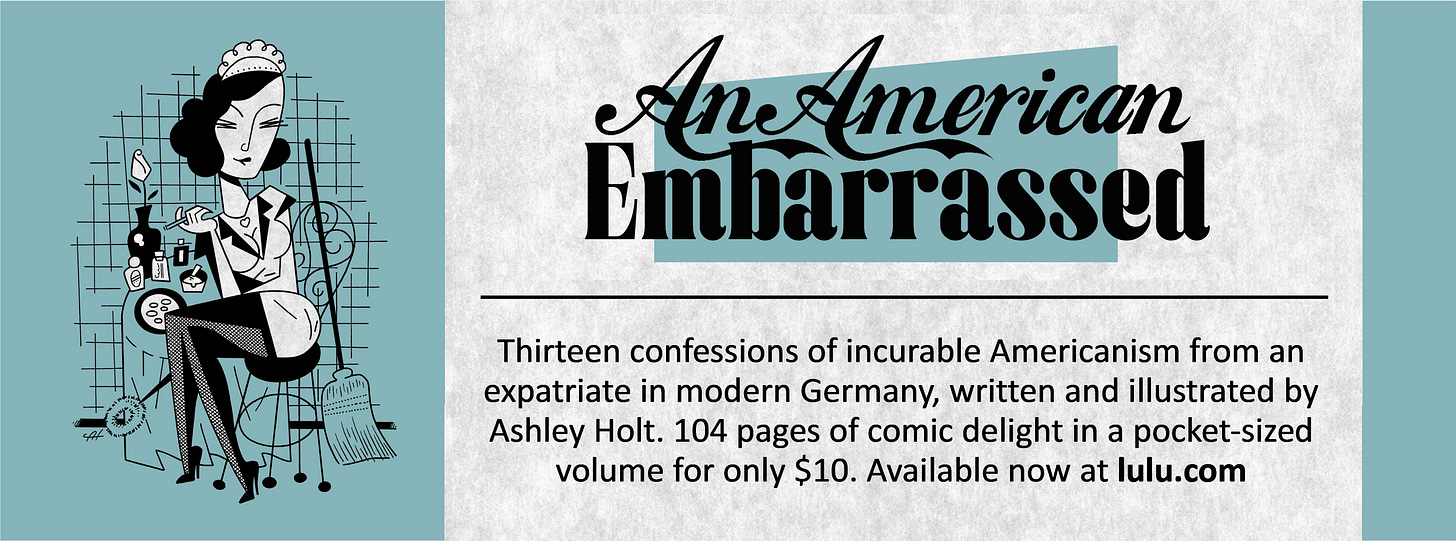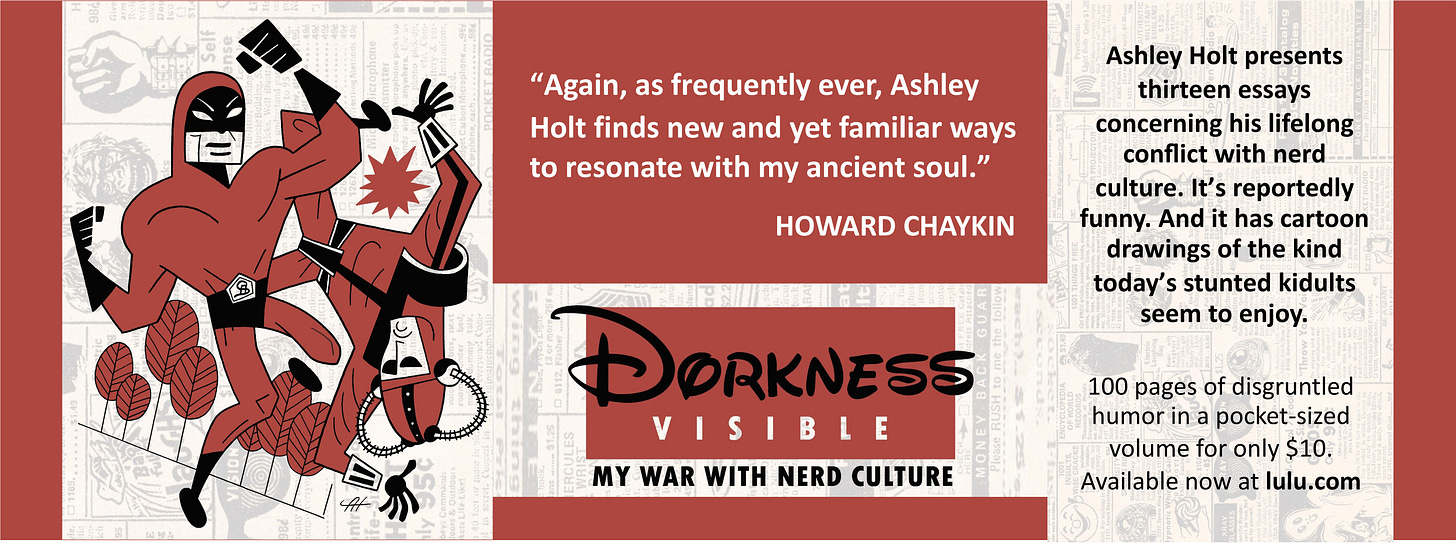In this domestic relationship, I do all the vacuuming. I have advanced skills in operating a vacuum cleaner because I was raised in padded, wall-to-wall, cut-pile luxury. I have labored in the fields of golden shag carpeting, the true measure of domestic responsibility in the 1970s, which required special rakes and tweezers. I’ve handled my share of crevice tools. I consider vacuuming the very soul of housework, a calling of Franciscan nobility.
And so, in deference to my dust-sucking pedigree, I recently put myself in charge of replacing our old vacuum cleaner. Though the former device, a Phillips mini-canister, still sucked adequately, it was a hulk of cracked plastic and duct tape, having been bounced against the bedposts and door jams of numerous abodes spanning two centuries. It now required more care and cleaning than the floors it ostensibly hoovered. It was time to send Flicka out to pasture.
And that metaphor is apt in my case. My emotional attachment to “perfectly good” household utilities is legendary, such that the devices in question may as well be beloved spaniels or cockatoos. I tried my best to resuscitate this vacuum. Just as I try to keep blenders or waffle irons on life support years after they have become irreversibly enfeebled. I stabilize lamps and toasters with glue-gun injections as best I can, and I force-feed adaptor chains to obsolete electronics to keep them vital in the digital age. I have been reduced to prayer over a kitchen-flooding Kenmore, whose cracked compressor “just needs time to heal.” And when, as it must to all mechanisms, death comes for faithful floor waxers and hair dryers, I am consumed with inconsolable grief.
Case in point, the last vacuum cleaner I put to rest, which was the biggest heartbreak of all. I hardly think I can be blamed for my affection: It was a classic 1966 Electrolux Model L, in turquoise, with retractable power cord and motorized power nozzle. My devotion to the historic Electrolux brand is no secret, and this model was a cherished family heirloom, having predated me in the Holt clan and vacuuming my childhood home faithfully for generations. It was, in retrospect, my favorite member of the family.
This was not accidental. The marketers at Electrolux knew how to manipulate consumer sympathies. Their Model L, designed with a distinguishable “head” and “face,” its Art Deco body sculpted to mimic an expanded rib cage, fully resembled a house pet. A loyal, long-tailed canine, following at its master’s side, dutifully inhaling hair and dead skin through its ass. Given what we know about the diabolical history of corporate motivational research, the vacuum’s combination of pet-like devotion and eagerness for anal entry could not have been happenstance.
It certainly worked on the Holt family. In those days, advanced vacuum systems like the Electrolux were not simply hoisted from store shelves like so much Bisquick. A company representative, beaming with Norman Vincent Peale enlightenment, would present himself on your chosen doorstep to deliver the Good News. The new-model Electrolux was here, available to you for 12 easy installments, complete with floor wax nozzles and brush tools, ready to purify your domestic showroom with scientific accuracy. The salesman demonstrated the Model L’s suction power by lifting a bowling ball with the hose. Even my cowtown parents were hip enough to catch the metaphorical implications.
Your new system was assigned a designated Electrolux repair specialist, his name and phone number inscribed on the appliance itself. Why, a fellow right down the block – your neighbor! Perhaps you know him from church or Little League? Seems we’re all part of the Electrolux family around here!
And inside the device’s box was a full-color, lushly illustrated brochure detailing the fantastic range of the Model L’s abilities. Even after eager customers like my father had signed the sales receipt, the company was still advertising the grandeur of the Electrolux life: You and your stylish new servant, perfecting the gleaming-white, wall-to-wall polypropylene of a prefab Storybook ranch any Cleaver or Petrie would envy. You’ve arrived! At home!
And what was clearly so insidious about this propaganda was that it worked. This level of modernism was, in effect, nostalgia from the future. No matter how full of booze, bludgeonings, teen pregnancies, and satanic ritual your actual homelife may have been, the glitzy dream of expertly manicured carpets and patios – the Potemkin Levittown to which Americans aspired – was what we came to accept as the real Golden Age. The catalog photo shoot distorted our memories. The model home was our home. Even though we never vacuumed in Dior.
Not only did this Model L radiate mid-century mystique to my impressionable soul, it still sucked expertly a half-century after its manufacture. In this way, it further embodied, in my misty eyes, the lost promise of America: the Space Race, Oldsmobiles, Diners Club, Tomorrowland, Ava Gardner, Coltrane, and Pez, all enshrined in one Buck Rogers canister vacuum.
Though our official Electrolux Repair Representative had long since retired and expired (his name and number embossed on the machine serving as a monument to his service), I kept the ‘Lux humming over the years with antique replacement parts I found on eBay, the online trading post for totems of America’s yesteryears. The hose frayed and the motor roared, but the little rocketship toddled on, filling its harder-to-find bags with decades of debris. My pet appliance would outlive me, I believed, surviving to tell the tale of our star-spangled glories of Eisenhower excellence. And my future carpets would be resplendent.
But you know what happened. I fled Tomorrowland for today’s Europe, where there are few tack-carpeted interiors and even fewer quality vacuums.* And that sturdy, Holt family Model L, still wheezing away at its housecleaning duties, was simply too robust to ship overseas at a reasonable rate. Plus, Fido’s rubberized wheels and protective trim had become gummy after sixty years of Carolinian humidity. The ravages of age had set in. I made a few photos, said my final farewell, and tossed that loyal bowling ball fluffer into a bin at the county dump, where it was immediately covered over with inferior Eureka uprights and rechargeable Bissell broom-vacs that hadn’t lasted two years.
The new vac I just bought, a Kenner-sized Miele, does not radiate mid-century mystique or the lost epoch of rose-colored futurism. There is nothing to suggest that I have joined the Miele Familie, nor does the device promote domestic sophistication or erotic hoseplay. It includes no color brochure to illustrate the fantasy of the Miele Lifestyle, no hint of victory in the class struggle. It suggests only economy, convenient storage, and disposability. Easy to buy, easy to use, easy to throw away. A utilitarian machine, designed to suck dirt for a few years and succumb to its planned obsolescence.
If anything happens to Lil’ Mister Bluetoots, I’ll just die.
- A.H.
*When my Frau visited the US the first time, she broadly mimicked trampoline bouncing to ridicule the ultra-padded carpets in our plush American homes. According to the Germans, comfort is for the weak.
(And let’s not forget Ashley’s website, jam-packed with portraits and other drawings, his highly-affordable prints and books currently available, his eagerness for your portrait commission, and his contact email, thrdgll@gmail.com, where he longs to hear from you.)








I was sad to pitch my mom's 1950's model Electrolux when I cleaned out her house(s) after she passed on. It was held together with brittle old duct tape and though I loved the design of the thing, I couldn't justify keeping it for aesthetic reasons and nostalgia alone, since the cord, too was frayed well beyond the dictates of safety, and I'm not the kind of guy who would search for parts on eBay. Of course, in our New Jersey home, we have three modern vacuum cleaners, none of which works perfectly, and all of which are probably within a year of falling completely apart. I have a soft spot in my heart for that old vacuum cleaner, and the boy I once was, who watched my mom do her housekeeping duty with all the implements technology at the time could afford.